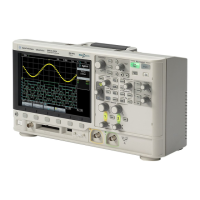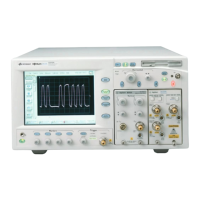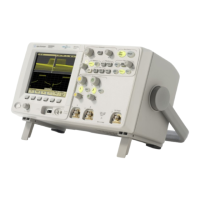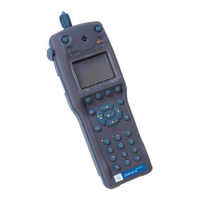4 Making Measurements
114 Agilent 1000B Series Oscilloscopes User’s Guide
To use tracking cross-hair cursors
You can set up one or two manually adjustable, tracking cross-hair cursors
to make amplitude (vertical) and time (horizontal) measurements at
different points of a selected channel’s waveform.
1 Press [Cursors].
2 In the Cursors menu, press Mode.
3 Continue pressing the Mode softkey or turn the entry knob to select
“Track”.
4 Press Cursor A, and continue pressing the softkey or turn the entry
knob to select the channel on which to make the measurement (or
“None” to turn off the cursor).
5 Press Cursor B, and continue pressing the softkey or turn the entry
knob to select the channel on which to make the measurement (or
“None” to turn off the cursor).
6 To adjust the cursors:
• Press CurA and turn the entry knob to adjust the “A” cursor.
• Press CurB and turn the entry knob to adjust the “B” cursor.
The A cursor values displayed are:
• A- >X
• A- >Y.
The B cursor values displayed are:
• B- >X.
• B- >Y
If both A and B cursors are used, these values are also displayed:
• ΔX — difference between CurA and CurB time values.
• 1/ΔX — shows the frequency associated with the time value difference.
• ΔY — difference between CurA and CurB amplitude values.

